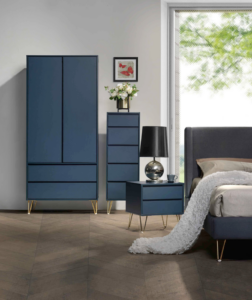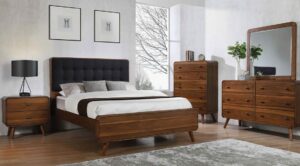Stock-outs are an age old problem that retailers have been dealing with. It is one of the most frustrating shopping experiences that a customer can have, and one of the more costly problems a retailer can face.
Imagine this:
You’re trying to buy a new couch for your living room. You spend hours and hours combing through multiple catalogs and online websites at different retailers. You compare prices, styles, and colors, until you find a piece that you love. The retailer’s website says the item is in stock in their store and they offer delivery services. Perfect!
You make plans to go in-store to see the product in person for a final test and are ready to purchase if it all checks out. The store, though, is a 30 minute drive away from your home. Still, you had a good enough experience interacting with their website that you decide to make the drive.
You get to the store, are warmly greeted by sales associates, and show them the product you are looking for. And that’s when they hit you: they don’t have the item you’re looking for in stock.

Wasted time and energy on the part of the consumer means you as a retailer lose their goodwill. But not just that – if your sales associates aren’t able to handle the situation well, the consumer may walk out of the store and forego the purchase. Or worse, they may head to a competitor and buy the product from them instead.
Why Stock-Outs Matter
For retailers, the most important advantage they have over online e-tailers is the consumer’s ability to test products in person. This is especially in high-consideration purchases. If a store can’t deliver on this promise, it leads to frustrating experiences for consumers.
Poor inventory management is often a leading cause, and the resulting costs can quickly become an issue. Across industries, retailers are estimated to have lost $1 trillion in sales in 2018 because of mismanaged inventory.
That number can be broken down into:
- $36.3 billion lost to competitors – consumers visit a competitor to complete the purchase
- $34.8 billion lost to Amazon or other e-tailers – consumers substitute the purchase with options found online
- $26 billion lost to abandoned purchases – sometimes, consumers have such a frustrating experience, they choose not to buy the product at all, resulting in lost value in the marketplace

Solutions to Protect Against Stock-Outs
The simplest, yet most complicated solution, is to improve inventory management. Using customer analytics to forecast demand, your store can manage its collection of items in-store and ensure your online catalog reflects your in-store inventory.
However, even with the best inventory management techniques, demand can still prove to be variable and random. Just as inventory management requires a safety stock to protect against unpredictable demand, a retailer needs to have robust strategies and tools in place to serve a customer well in the event of an unforeseen stock-out.
The Job of a Sales Associate in Store

Protecting against stock-outs means equipping your sales associates with an arsenal of knowledge about your catalog so that they can find products that are easily substitutable based on a similar style, fabric, color, price, and more dynamic product attributes.
The job of a sales associate in store should be to work with the customer to find the next best option when their first choice is out of stock. This requires the associate to understand the use cases of the product and the particular attributes that attract the customer. Once they understand this, they can recommend new products to the customer that they may enjoy just as much as their original choice.
Can I do this online too?
Surprisingly, yes!
How do you replicate the experience of an in-store sales associate on your website? It may seem impossible to put this level of personalized care on a website for a customer to interact with.
It starts with collecting data about the shopper’s preferences through style quizzes and through artificial intelligence that can track and understand the customer’s interactions on site to distill their attribute preferences. This allows you to understand exactly what your customer is looking for so that you can offer relevant, personalized suggestions that they will be more likely to act on.
Put the power of a personal stylist on every web page with Shoptelligence. See how it works today.
Author: Riya Gupta, Marketing Intern






